Home / / Photo / Sculptures / Curatorial Projects / Bio / Contact
![]()

![]()

![]()
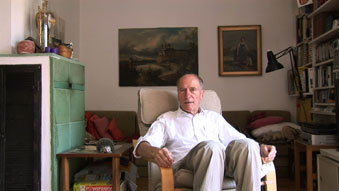
![]()
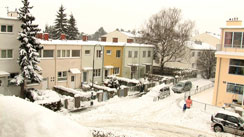
![]()
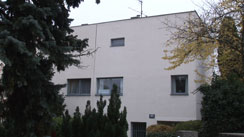
![]()
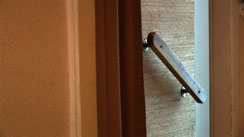
![]()
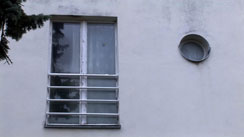
![]()

![]()
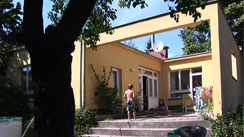
![]()
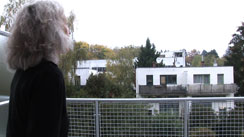
![]()
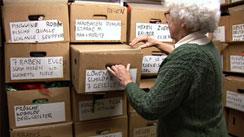
![]()
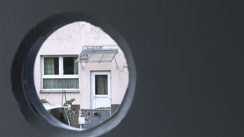
![]()
![]()
> back
![]()
![]()
quotes from interviews:
For me this is the only familiar, and hence, the only possible way of living. I simply can't imagine living in a block of flats. This is just ideal. (Elfriede Mislik)
To live in a Rietveld house is to live in the vertical. (Susanne Kompast)
The idea was not a bad one, but one must take into account that circumstances were different when the project was planned and started in 1928. Clearly, construction was different back then and this was an economy version. Therefore the initial idea was to tear down the whole estate. But then they thought it would be a pity and decided to sell the houses. However, only 9 out of 50 were sold. (Walter Raschbach)
The plan was for people to buy the houses. That's why they were furnished. Some people liked it and some didn't. And here's a little
anecdote my wife told me: She used to go to primary school down in Steinlechner Street. Her classmates used to make fun of her, calling her a poor girl, because her family could not afford a roof on the house. Because all the houses had a flat roof. People obviously didn't like these flat roofs. They felt the houses were lacking something. (Raimund Heinz)
Many friends who visit me say the terrace isn't finished. I think it is exactly the way it needs to be. Every house here is different, and everyone has something unique. Some have a nice roof terrace, I have this one. I like it the way it is,and it protects me from wind. The window opening here provides a view into nature. Everything is put together nicely. You don't feel like living in the city of Vienna here. It's like living in the country. It's pleasant, the neighbours are nice. The peace and quiet is very agreeable. (Ivana Jäger)
I have been living here, with interruptions, since I was ten. My mother swapped houses with another lady. They were council flats, after all. We often forget that today. This house wasn't so much to her liking, the serial style was too cramped for her. I like it quite a bit as it provides the right mixture of country and city life. I'm a single mother of two, and there are many things I couldn't have done if I hadn't lived here. Here you can always ask the neighbour for an egg. If you have little children, well, mine were lucky enough to have lots of peers. The children grew up together and we, the mothers joined our forces. So did the children. (Margot Hruby)
My parents moved here in 1939. So I could play in a sand box, run around outside naked. My father was an architect and interior designer. He worked with Thonet. On the weekends we would have relatives over. So mum was never alone with dad at the weekends. The thing was that my dad liked to be undisturbed, which is why my mum became the first so called "green widow" of the 13th district. He would stop by to check on us and go back to the city to his projects... How my parents, a couple with a child, were able to cope with each other in this small serial house by Hoffmann, I don't know. No wonder they got divorced. Where is a man supposed to retreat here? There's a bedroom, a living room, a children's bedroom, and that's about it. (Elisabeth Gaisser)
For a Loos-house you have to think out of the box. We came here from a big council flat in the 17th district with a grand piano, which we had to leave in the garden as it didn't fit through any opening... Every now and then you have to clean out and get rid of stuff you don't need, as there isn't a wardrobe that would fit in any of the rooms. One has to reduce the number of things and pieces of furniture. Personally I like it. We people of the West have too much stuff anyway. We have more but we are less. Here, in this bright space, you have the chance to be, to breathe. (Margot Hruby)
A certain degree of voyeurism is required. One can always observe the guided tours come and go. It’s interesting, but somehow you do feel as if living in a goldfish bowl. (Susanne Kompast)
The tourists probably wonder why over there houses are fixed and these here aren't. Not much has happened, to put it mildly. If certain people hadn't neglected it, we wouldn't be having these problems. I say, a house is like a small child. It's logical. If you don't invest in it, nothing comes out of it. (Angelika Grasmuck)
The Rietveld house reveals its Dutch character from the inside and outside. Transparency was a big issue. I was even told to refrain from putting up curtains. But I don't want to fit the cliché too perfectly... The proportions are really challenging. The clear forms call for open spaces. One mustn't overcrowd them with things, or art or anything else for that matter. You need to keep the proper dosage... (Susanne Kompast)
The architects of the project wanted to bring together working and middle class. But now it seems the management company wants to attract only the rich. I think it's a pity as this wasn't the architects' intention. Do people get along? For many years they have, and now the harmony is gone? It doesn't really sound convincing. This is unacceptable. Therefore we, the workers, will fight for our right to stay here, side by side with the middle class or upper class or whatever. One doesn’t need to pretend. So they have more money, who cares? We're still all human beings who want to get together and be happy, and live in harmony. (Angelika Grasmuck)
All these architects wanted to build a model estate for people to live in. The focus was to create houses one can live in, a space for living. Not much is left of that as windows and roofs must be leaking. Samples of the plaster from the 30's were taken so as to reconstruct it. Samples of the–allegedly inferior–paint were taken so as to reconstruct it and put the houses into the same inferior shape they used to be. In the Rietveld house across the street, for instance, several restorers, which is a very costly issue, restored an 80-year-old linoleum with a paint box for several days. Such things cost a whole lot of money. Money, we, the tenants, have to come up with through our rents over the years. So the social housing project of the 1930's, a very fine idea, has turned into an homage to material, which needs the corresponding tenants. Because someone who can pay 1,400 euros or more a month for a house with a draught, can probably bear the higher energy costs coming with it. (Margot Hruby)
-